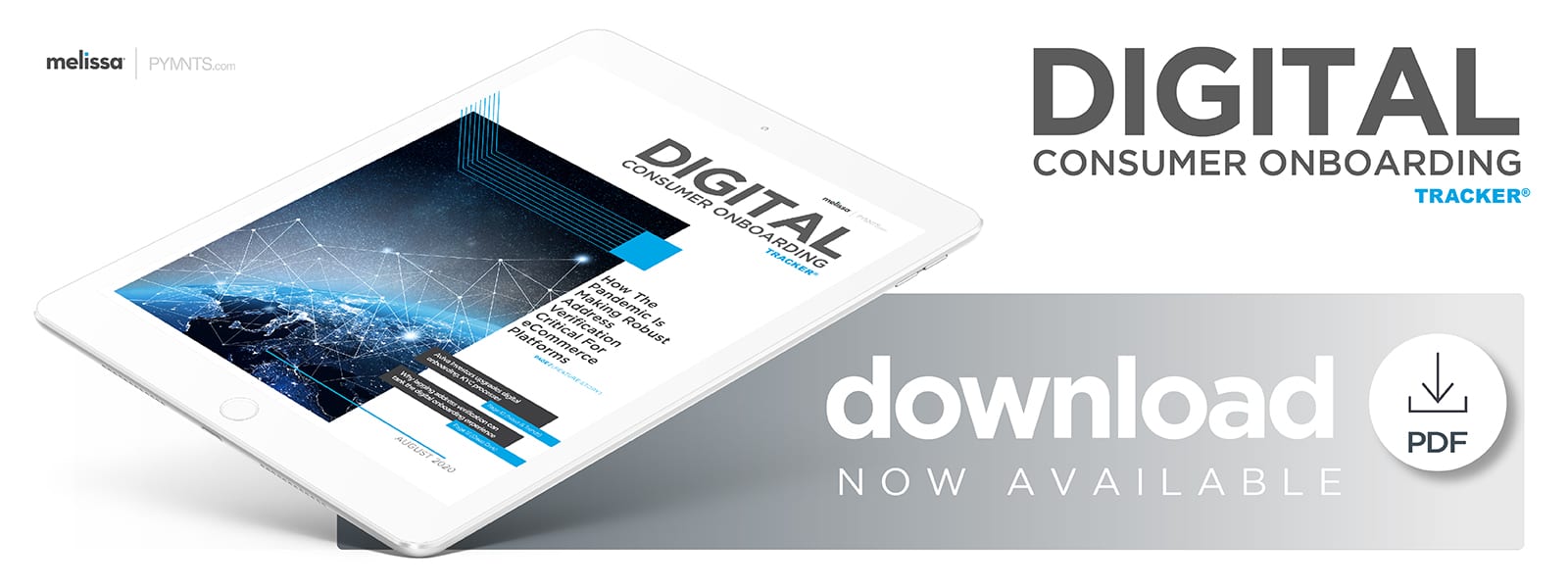Deep Dive: Why Address Verification Lags Can Tank The Digital Onboarding Experience

Incorrect or late deliveries can frustrate consumers, especially in a climate in which home-delivered goods reliance skyrocketed so highly that one-day delivery quickly became a foregone dream.
Supplying correct address details had always been important prior to the pandemic, but the effects of inaccurate information can be devastating. One 2019 study found that incorrect addresses cause 19 percent of all failed deliveries, for example, and these failed deliveries cost approximately $216,171 per individual business annually.
Lowering the percentage of failed deliveries — and their related costs — has gained importance as the pandemic progresses. It has become essential for companies to be absolutely sure their customers’ addresses are correct from the very beginning of their relationships. This means effective address verification must occur during onboarding, both for companies that deliver physical goods and financial institutions (FIs) that provide necessary banking services and need to quickly send debit or credit cards to new customers.
Doing this with the heightened swiftness consumers expect is more challenging than it may seem, however. Some 17 percent of addresses become incorrect every year as consumers move or city planning shifts street names and ZIP codes, for example. Lengthy onboarding forms also deter the completion of these processes or purchases. Seventy-five percent of online shopping carts are abandoned yearly, and 27 percent of those carts are abandoned because finalizing purchases and completing attached forms took too long.
The following Deep Dive examines the challenges of supporting accurate, data-driven address verification as part of the onboarding process and explains why this step is vital to digital onboarding. We also analyze technologies that can be seamlessly leveraged for both customers and the entities looking to form relationships with these users.
The Address Verification Challenge
Address verification may seem like a very small part of the overall digital onboarding process, especially for consumers who simply have to enter details and wait for approval. Inaccurate or unconfirmed addresses present real and present dangers for companies across industries, however. eCommerce companies that are unable to verify new users’ addresses risk delivering their products past a time frame these customers are willing to accept, potentially resulting in immediate negative consequences. Forty-five percent of consumers abandon online shopping carts without completing purchases because the delivery timelines or options are unacceptable to them.
Requiring customers to fill out lengthy digital forms can also contribute to the perception that the onboarding and subsequent delivery processes are not swift enough. Address verification processes are essential for streamlining, and retailers are growing more cognizant of this— one report found that 66 percent of retailers viewed address accuracy as vital to their operations.
One of the main issues with proper address verification stems from needing to verify numerous tiny details all at once. This challenge is familiar for firms in multiple industries that work to guard against fraudsters and verify customer legitimacy. Companies must be prepared to accept that a certain amount of human error is inevitable with digital address input as is the case with other authentication processes. Approximately 20 percent of the addresses consumers write on online forms include mistakes: misspelled street names, ZIP codes that are a few digits off track and more, according to one study. This means that merchants must verify addresses in a way that not only wards off fraudsters but also helps decrease these instances of legitimate human error.
How Autocomplete Addresses The Data Problem
The key to successful verification is the employing of solutions that check that the data provided for these forms is correct on first pass, and these tools may already be widely available. Many companies are exploring the use of “autoforms” or autocomplete solutions. These use technologies such as artificial intelligence (AI), automated tools and application programming interface (API) platforms to help generate and fill in address details without consumers’ complete input.
Autofill technology has been present for a number of years in multiple industries, yet deploying it for address verification during the onboarding process can reduce unintentional spelling mistakes or other errors. The technology also has the benefit of helping lower the risk of new clients abandoning the sign-up process as it assists consumers in finishing forms quickly.
These tools are now gaining the benefits of newer technologies to strengthen security. Autofill solutions leverage APIs to connect to online databases and confirm the accuracy of autofilled details with ease and flexibility. APIs can increase the speed of the actual delivery of companies’ products once the initial onboarding and address verification process is completed through what are known as shipping APIs. eCommerce retailers using shipping APIs can input their delivery data into this platform to create labels for packaged goods, for example, expediting the processing and verification of addresses before products go out to their intended recipients.
These and other technologies can craft the speed and security balance central to the consumer relationship. Making sure that address verification is conducted with attention to detail means it is done accurately and at scale and could prove to be highly impactful for customer conversion. Companies will therefore need to seriously analyze how they conduct this aspect of the onboarding process and adopt technologies and solutions to mitigate frustrations and remain competitive.
